
When the COVID-19 pandemic arrived in the United States in 2020, the American research community experienced a sudden spike in funding. Universities, pharmaceutical companies, and state and federal agencies all showed a renewed interest in studying emerging infectious diseases, and the National Institutes of Health (NIH) increased its research budget request by the most significant amount in nearly 20 years.
This raised level of national concern for preparedness sparked many institutions to quickly increase their BSL-3 capacity to study COVID and other emerging infectious diseases that could potentially threaten society. Organizations with existing high-containment biological research spaces were well positioned to support ongoing and future studies, while many organizations that had decommissioned previous BSL-3 spaces were faced with rapid response challenges.
Although increased attention to biomedical research offered opportunities for universities and other research institutions, those opportunities came with costs and risks. Creating new biocontainment facilities is an expensive endeavor, and as government and private funding levels fluctuate based on urgency, universities and other research institutions that build new dedicated high-containment facilities now may find themselves with costly labs in a stagnant funding environment in the future.
However, organizations can mitigate those risks – and lessen costs, in the long run – by creating research facilities that can modulate between low-level and high-level biosafety. This ensures a more effective use of space and funds to align research and diagnostic testing with immediate needs. It will ultimately allow organizations to adjust spaces more easily and rapidly, at a lower cost.
BSL Conversions: A Cost-Efficient Method to Support High-Containment Research
When the COVID-19 pandemic arrived in the United States in 2020, the American research community experienced a sudden spike in funding. Universities, pharmaceutical companies, and state and federal agencies all showed a renewed interest in studying emerging infectious diseases, and the National Institutes of Health (NIH) increased its research budget request by the most significant amount in nearly 20 years.
This raised level of national concern for preparedness sparked many institutions to quickly increase their BSL-3 capacity to study COVID and other emerging infectious diseases that could potentially threaten society. Organizations with existing high-containment biological research spaces were well positioned to support ongoing and future studies, while many organizations that had decommissioned previous BSL-3 spaces were faced with rapid response challenges.
Although increased attention to biomedical research offered opportunities for universities and other research institutions, those opportunities came with costs and risks. Creating new biocontainment facilities is an expensive endeavor, and as government and private funding levels fluctuate based on urgency, universities and other research institutions that build new dedicated high-containment facilities now may find themselves with costly labs in a stagnant funding environment in the future.
However, organizations can mitigate those risks – and lessen costs, in the long run – by creating research facilities that can modulate between low-level and high-level biosafety. This ensures a more effective use of space and funds to align research and diagnostic testing with immediate needs. It will ultimately allow organizations to adjust spaces more easily and rapidly, at a lower cost.
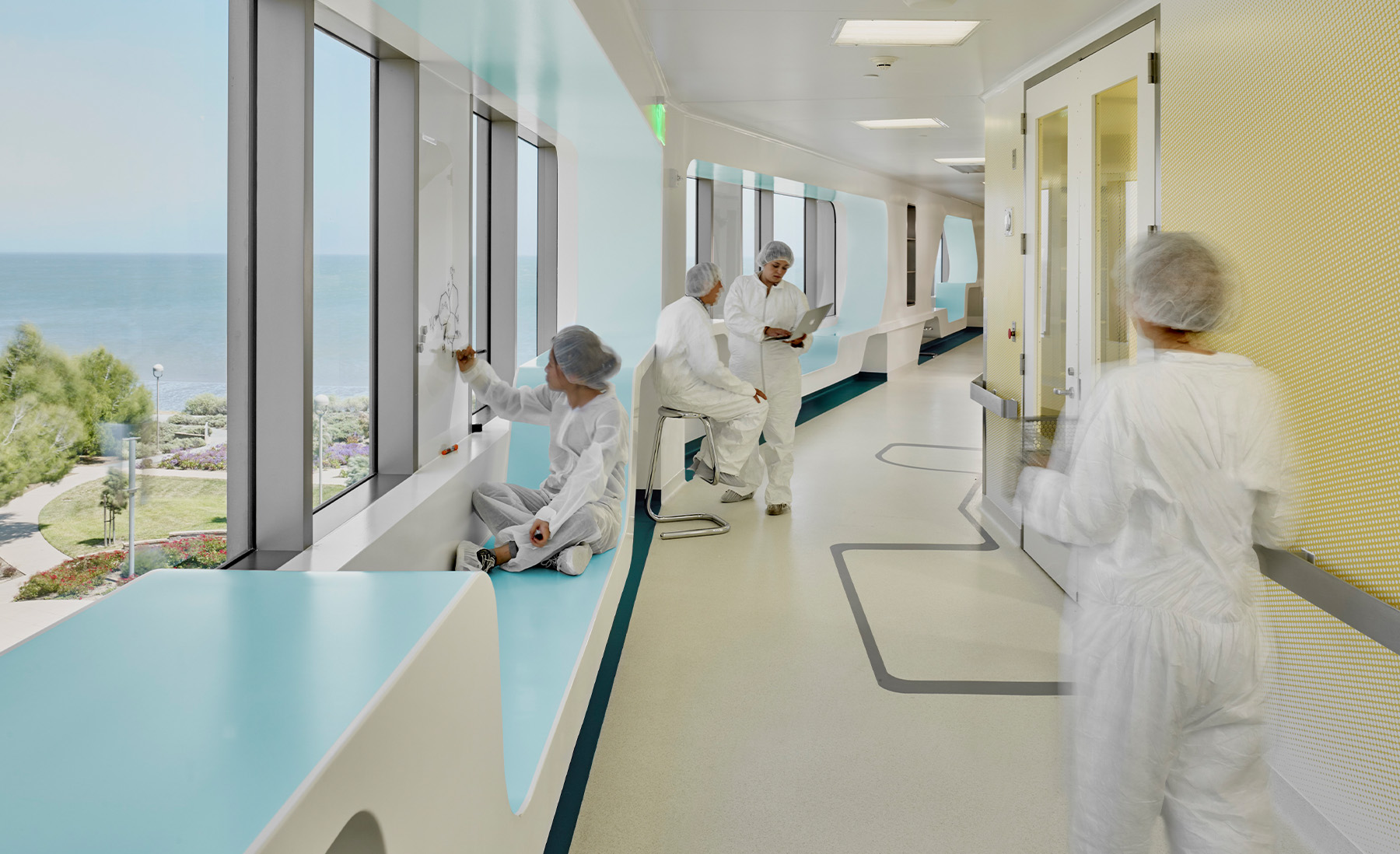
Opportunity and RiskAs COVID-19 quickly developed from an emerging disease to a global pandemic from late 2019 into early 2020, subsequent public fear and social and economic disruption inspired governments in the United States and abroad to devote increasing resources to medical and biological research. In response, the NIH increased its request for research funding in its 2021 budget by $9 billion, or 14.4 percent – the highest increase since the period immediately after 9/11, when the country feared terrorist attacks using biological agents.
BSL-3 labs received the greatest share of that 2021 funding increase due to the need to expand research capacity associated with COVID. Because SARS-CoV-2 is an airborne infectious agent with the potential to cause serious harm, the CDC recommended that BSL-3 labs be used to conduct research related to this virus.
But these recommendations aren't the only factor that focused attention on lab safety. The possible cause of the pandemic raised public concern about biosafety. It has not been conclusively determined whether the SARS-CoV-2 virus developed in nature or in a lab. Regardless, public worry rose along with the desire for increased virus research adhering to appropriate lab safety requirements.
As the urgency of the pandemic initially held a great deal of public attention, government funding significantly increased. However, public attention and funding has already begun to wane, and it is impossible to predict NIH funding levels for studies that require BSL-3 facilities in the years to come. After NIH funding spiked immediately after the 9/11 attacks, in the following years it stagnated for two decades. In inflation-adjusted dollars, NIH research funding declined by more than 20 percent between fiscal 2003 and fiscal 2013, and it did not fully recover until fiscal 2021.
Many organizations decommissioned BSL-3 spaces in the years preceding the pandemic, and for them, the pandemic uncovered a need to provide and maintain an appropriate level of BSL-3 space to study current and future emerging infectious diseases. Research institutes quickly learned that the response to the pandemic would require BSL-3 labs, which take time and money to build and would be expensive to operate. These organizations are attempting to evaluate risk against cost: with insufficient BSL-3 space, they risk losing opportunities to investigate the next potential pandemic; with too much BSL-3 space, they will carry higher operating cost in periods when biocontainment facilities may not be required.
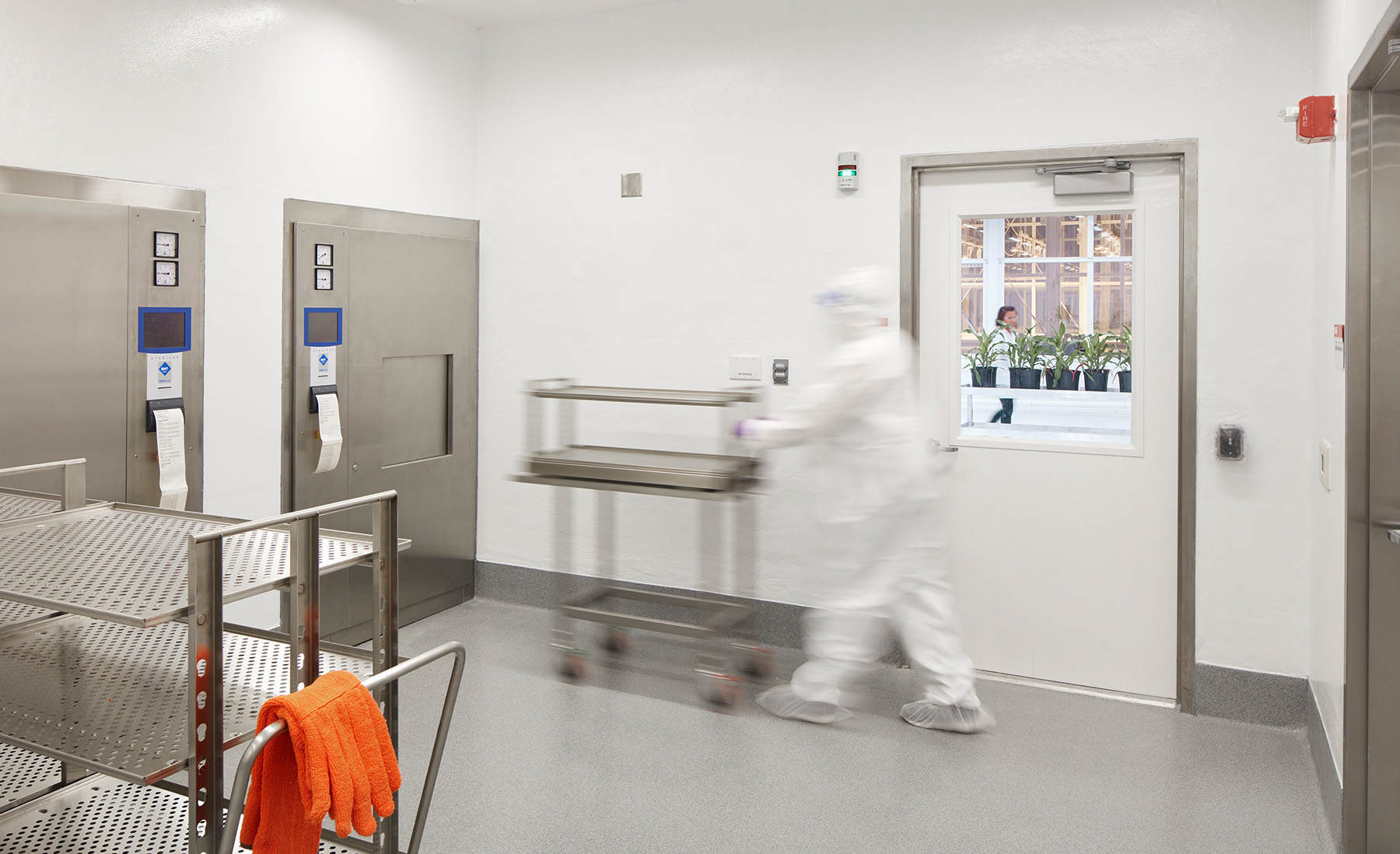
BSL-2 versus BSL-3Lower biosafety level labs have several advantages as research spaces. Compared to BSL-3, BSL-2 labs are generally open in design, giving them the ability to support multiple research projects simultaneously within the same lab space. They don't generally require exhaust air filtration and have simpler systems for air-flow management, meaning that the utility costs – particularly HVAC costs – are significantly lower. The need for and cost of personal protective equipment (PPE) is also lessened in a BSL-2 space.
However, BSL-2 labs can only work with biological agents that pose minor or moderate risk to a healthy adult. To work with an agent such as SARS-CoV-2 – which carries a significant risk and may spread through the air – a lab must maintain BSL-3.
BSL-3 labs require double-door entry and a vestibule area in which researchers can wash and put on personal protective equipment. In addition, BSL-3 labs must have single-pass inward directional airflow and almost always require HEPA filters on their exhaust air systems. These safety measures increase the cost of construction as well as operating costs.
An organization doesn't have to choose between the advantages of BSL-2 or the safety of BSL-3. Some institutions are creating flexible lab spaces that can operate at a BSL-2 and modulate up to a BSL-3 when the need arises. To create such a space, the most important element is to prepare the underlying infrastructure and particularly, the HVAC infrastructure. By including the right utility capabilities, an organization can rapidly switch the same lab space between BSL-2 and BSL-3, based on the need of current studies. It is critically important to understand the basic building blocks required to support a BSL-3 suite – the types of spaces and their arrangement. Facility managers will want to ensure that the lab can modulate between BSL-2 and BSL-3 function without the loss of effective research and testing space.
The operational life-cycle costs of labs often exceed the initial construction costs. If properly designed and constructed, a lab that can modulate between biosafety levels makes the most practical sense over the long term because this type of lab allows the organization to operate at either BSL-2 or BSL-3 without the need to renovate. Therefore, the lab only incurs higher operating and utility costs when operating in a BSL-3 condition.
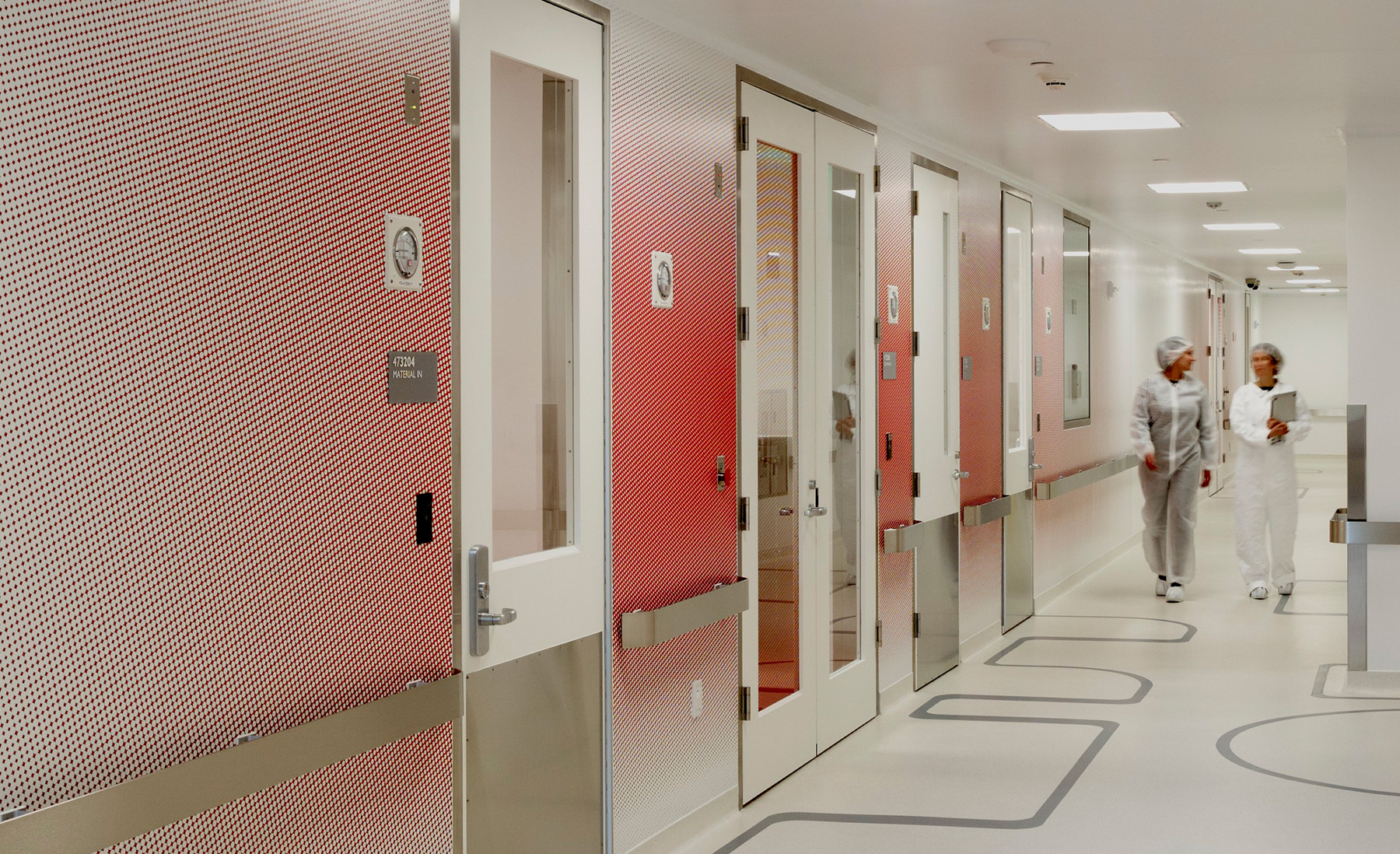
Proximity, Systems, and RedundancyWhen initially considering opportunities to create these convertible labs, organizations should consider several
key aspects that would accommodate a rapid modulation between BSL-2 and BSL-3 space:
1. Accommodate controlled security – the key is location, location, location
2. Create clustered labs
3. Plan for proper operational flows
4. Provide a hybrid mechanical system that is maintenance and energy efficient
5. Provide a hybrid liquid effluent system
Controlled Security //
When looking for lab space that might function as a BSL-3 lab, facility managers should start by finding a secure
area within the building – one with limited entry and exit points.
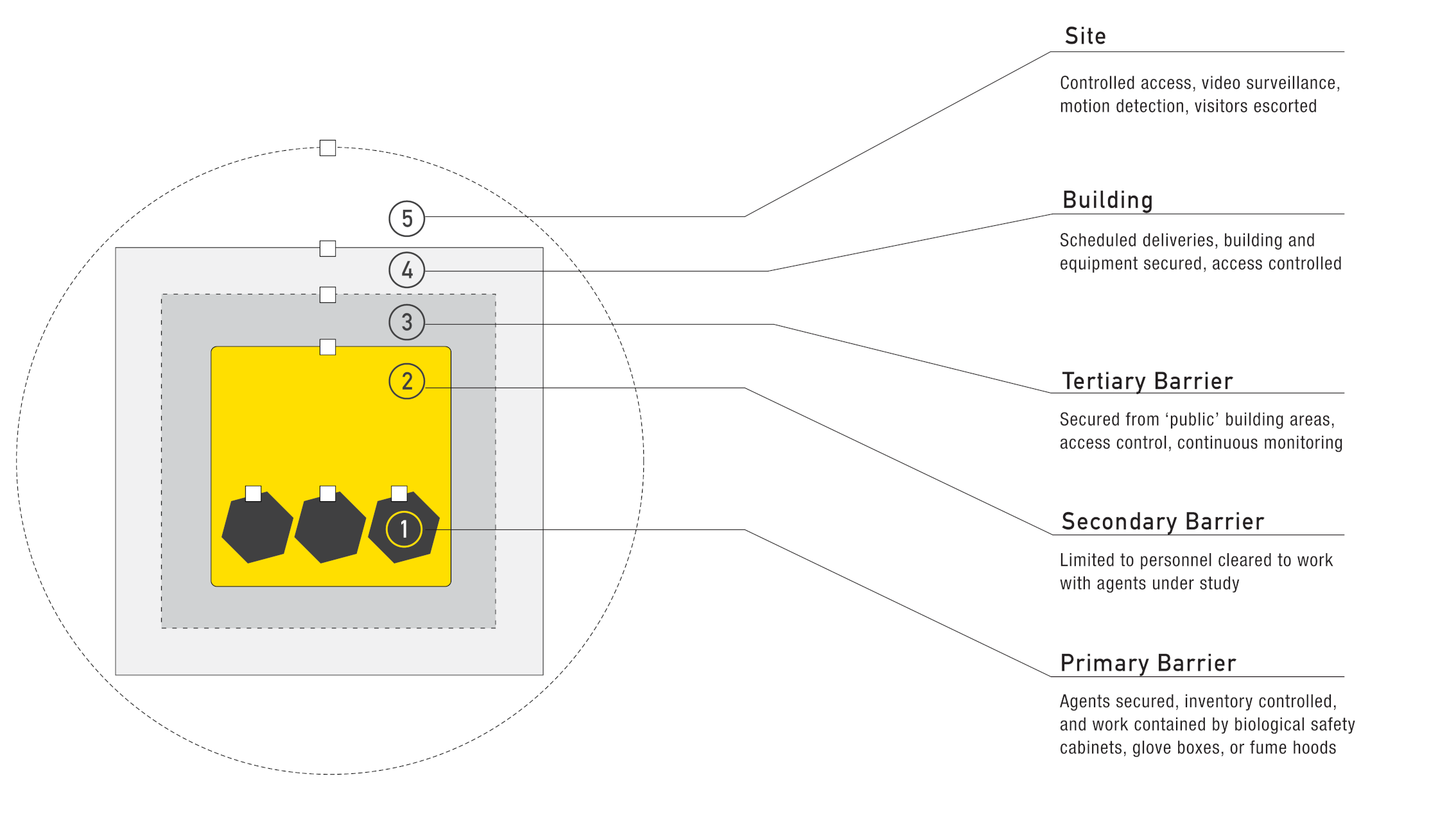
And for efficiency, they may want to consider developing a suite of BSL-3-capable labs, rather than just a single lab. Work in BSL-3 labs generally needs to be conducted in smaller spaces, accommodating a small number of researchers in each space to avoid cross contamination and to minimize movements and activity around those handling infectious agents.
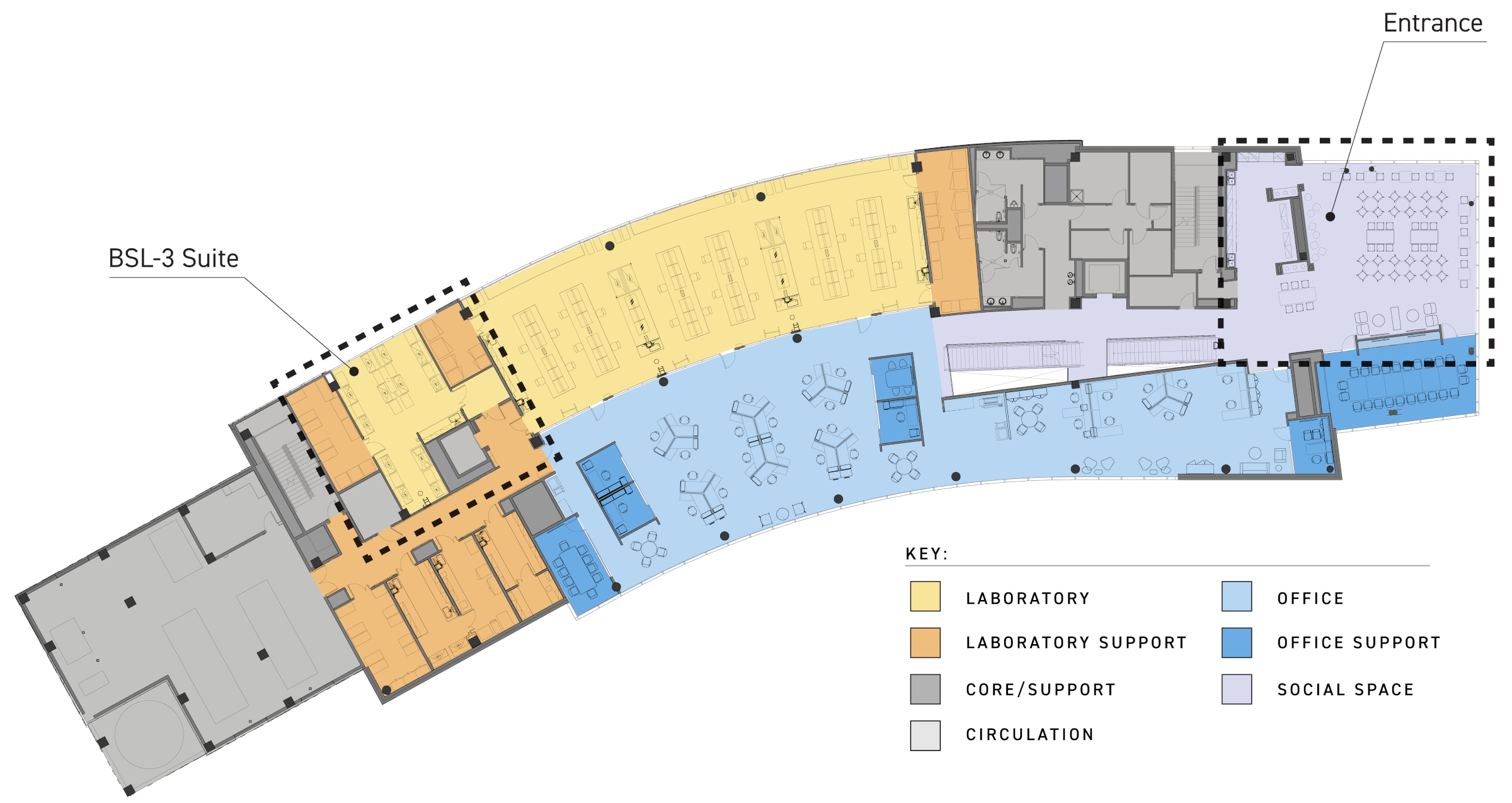
Clustered Labs //
For BSL-3 work, a series of small rooms usually provide more flexibility and redundancy
than one large open lab. While this is counter to the open-lab concept generally desired
in BSL-2 laboratories, open BSL-2 labs are usually accompanied by smaller, adjacent
support labs.
Setting up a cluster of labs that can be utilized as BSL-2 support labs or BSL-3 labs is a good approach. In addition, proximity to any additional supporting facilities should be considered.
Operational Flows //
The facility designers will want to consider redundancy in the lab suite's entrances. If
the facility is supporting both BSL-2 and BSL-3 studies at the same time, the design should
allow the BSL-2 researchers to bypass changing rooms so that they can come and go without
infringing on the changing area for BSL-3 lab users. Understanding the required personnel
and material flows for a BSL-2 and BSL-3 lab suite is critically important, as designers
will want to properly plan a space that can easily modulate functionality between either
biosafety level.
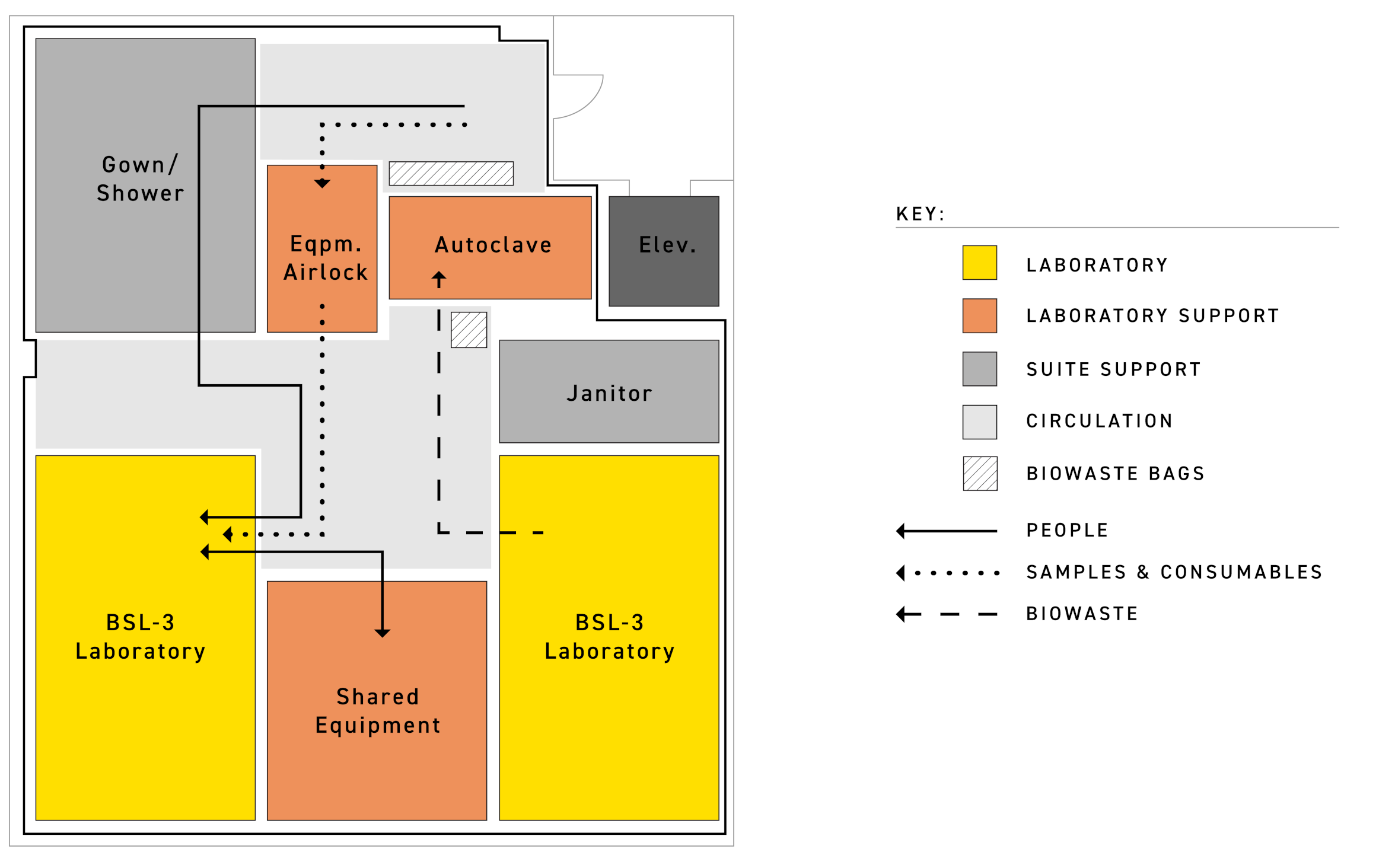
Mechanical Systems //
Ideally, the lab space will also be located near the building's mechanical infrastructure.
A BSL-3-capable lab requires different mechanical support than a BSL-2 or lower safety level lab,
including a redundant HVAC system. Portions of the mechanical system will be exposed to contaminants
when operating at BSL-3. These components will require testing prior to operation at BSL-3 and
decontamination prior to moving from BSL-3 work to operation at BSL-2. Proximity between the BSL-3
lab and the mechanical space will minimize the extent of contaminated ductwork and generally help to
simplify both the initial design of the air systems and the work required when transitioning from one
containment level to another.
While there are several planning options to consider, the following examples explore two of the most common approaches.
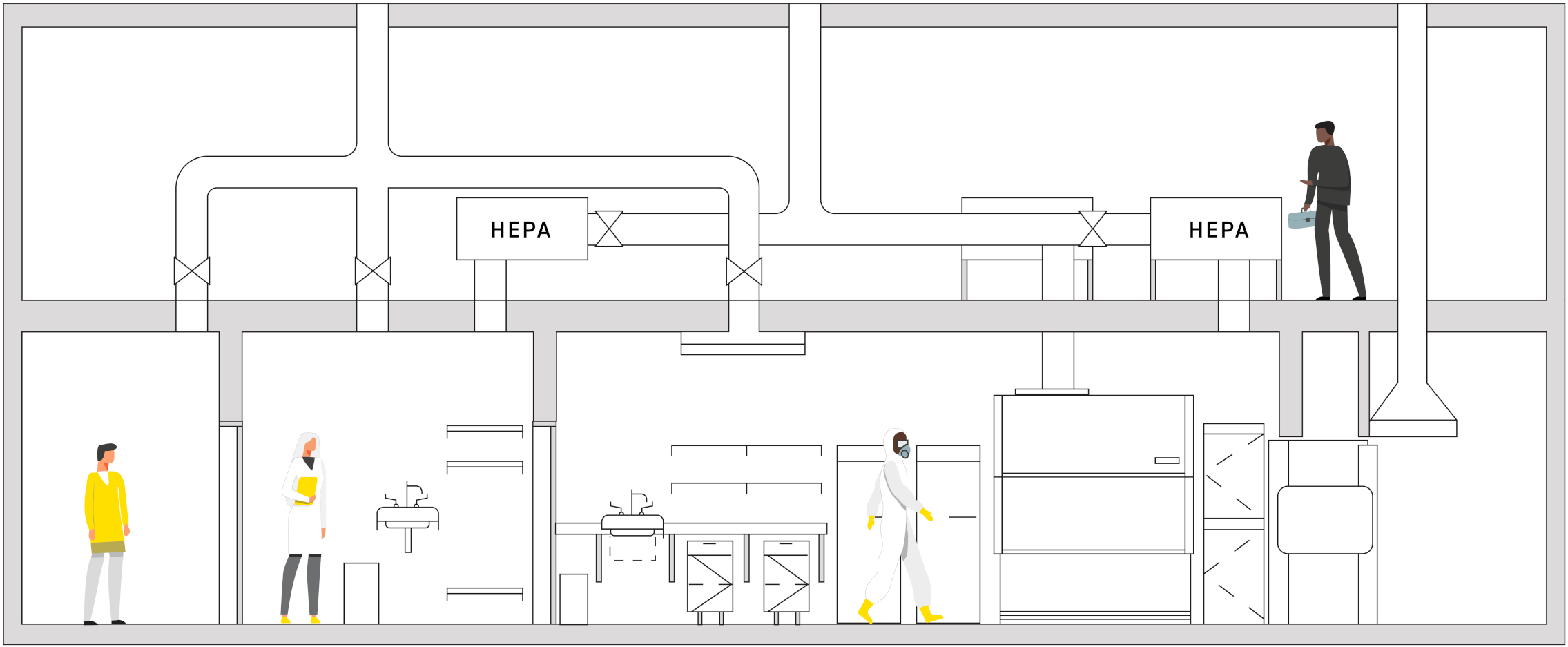
Diagram 1
Diagram 1 shows an ideal scenario where a completely accessible floor is located immediately above the BSL-3 lab. This concept is usually implemented on new construction. It allows service and maintenance to access critical mechanical devices outside containment without interrupting operations. The disadvantage is added square footage, and that is not usually suitable for an existing facility.
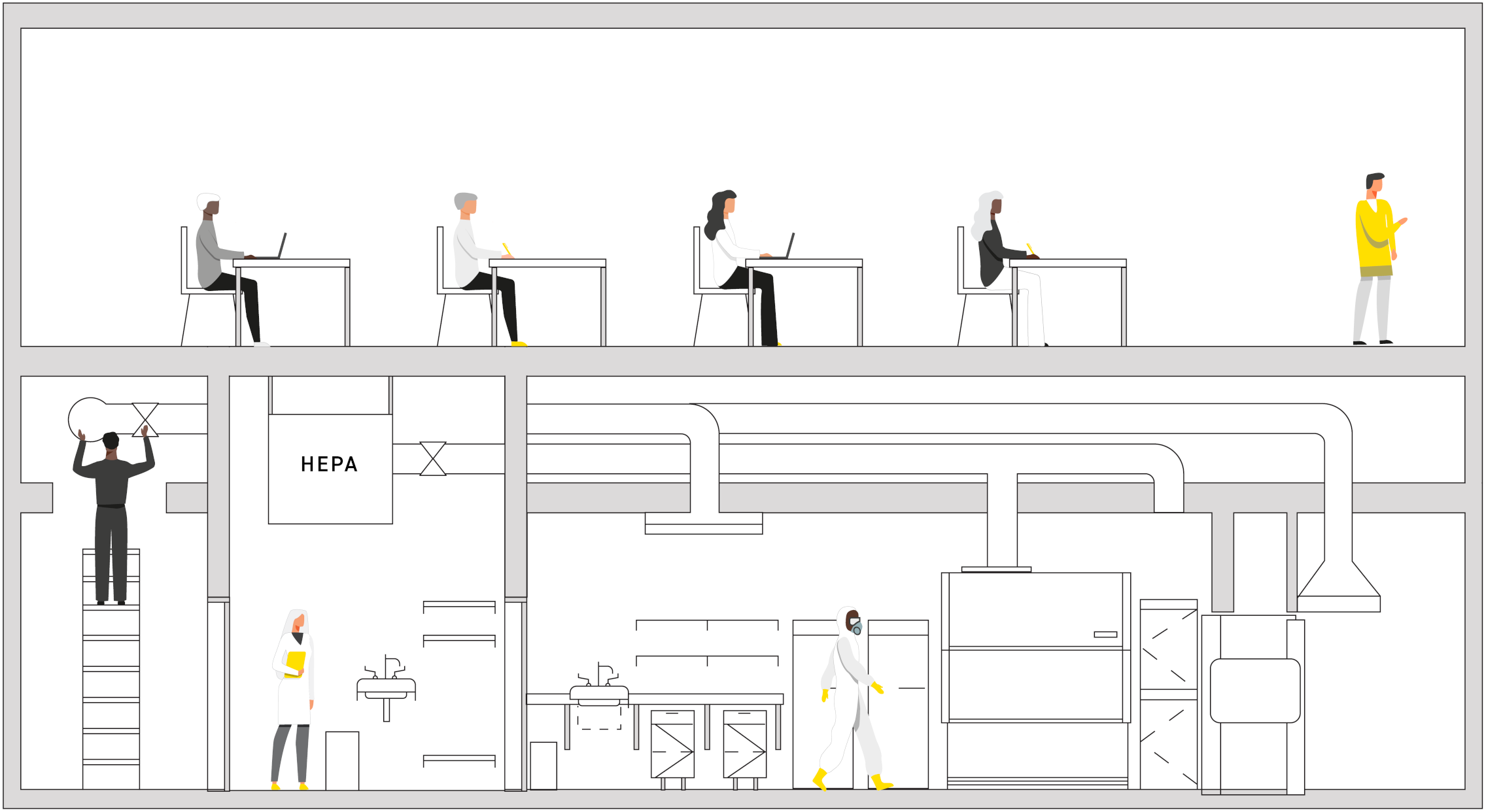
Diagram 2
Diagram 2 shows a retrofit condition where occupied spaces surround the existing BSL lab area. Creating mechanical space adjacent to the BSL-3 suite for ease of access is critical. This approach works with smaller BSL-3 lab suites.
Energy Efficiency //
These two diagrams indicate the necessity of finding accessible space to locate HEPA filtration equipment
and room valves outside the containment envelope of a BSL-3 lab suite. Most BSL-3 labs are equipped with
HEPA filters on the exhaust air due to the agents in use, assessment of risk, or simply to allow for
flexibility to work with emerging infectious diseases.
The amount of energy required to move air through HEPA filters that filter out 99.99% of the particles in the air is significant. The adaptable BSL-2/BSL-3 lab's HVAC system would allow for bypass of the HEPA filters to lower the energy usage when operating at BSL-2. For rapid conversion between BSL-2 and BSL-3, air valves should ideally be able to be controlled and programmed through the building automation system. Ideally, all duct work would be previously configured and installed to accommodate operating at either biosafety level. A more cost-effective concept could be to install the housings for HEPA filters but only install the filters themselves when required for BSL-3 work. The switchover from BSL-2 to BSL-3 would only involve recertification and not construction.
Effluent Decontamination System (EDS) //
The liquid effluent plumbing for a BSL-3 lab may need to include an effluent decontamination system (EDS)
capable of sterilizing the wastewater before it enters the municipal waste system. Many BSL-3 labs operate
without an effluent decontamination system, utilizing protocols to chemically disinfect liquids in the
lab before releasing them to the drains. However, for a lab that may need effluent decontamination,
designing a bypass for the liquid effluent so the waste can be directed through sterilization only
during a BSL-3 operation would also support a rapid transition between biosafety levels. All BSL-3
labs should be located near a sterilizer for decontaminating solid wastes produced in the lab.
Locating the sterilizer so it can be accessed directly from the potential BSL-3 area will accommodate
simpler and safer protocols for waste removal. Diagram 3 indicates the ideal planning scenario for
locating EDS equipment.
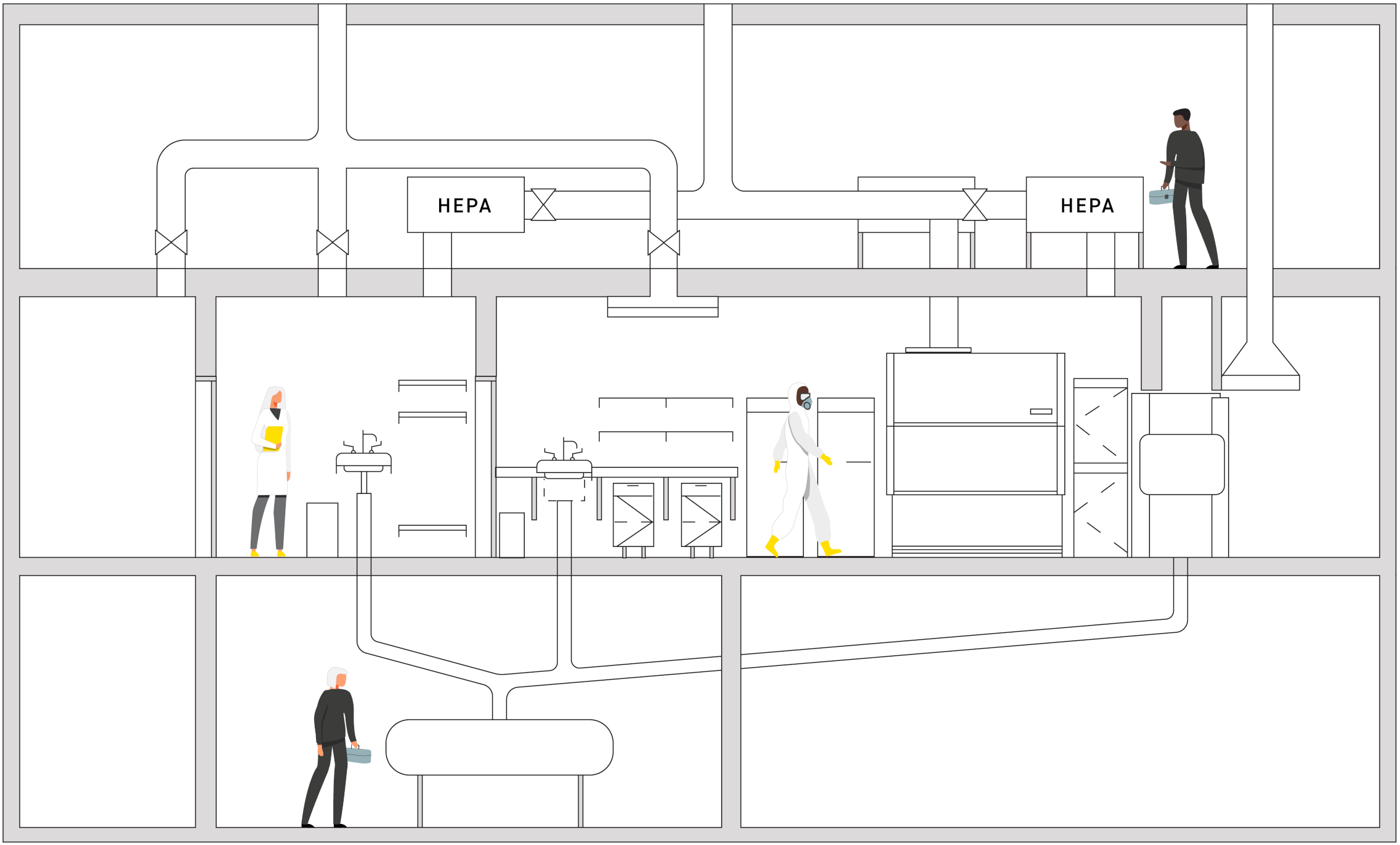
Diagram 3
Future Proofing LabsLooking to the future, research institutions should be keenly aware of the costs of maintaining BSL-3 standards. With the lessons learned from 9/11 and the COVID-19 pandemic, the government and individual organizations should be better prepared for a similar public health emergency. By preparing facilities to easily modulate between BSL-2 and BSL-3 standards, organizations can take on studies at different levels of safety more rapidly and at lower costs. When an opportunity arises to perform BSL-3 studies, a research facility can quickly alter the space to meet stricter biosafety level requirements, helping to advance research and diagnostic testing to protect the health and welfare of society.